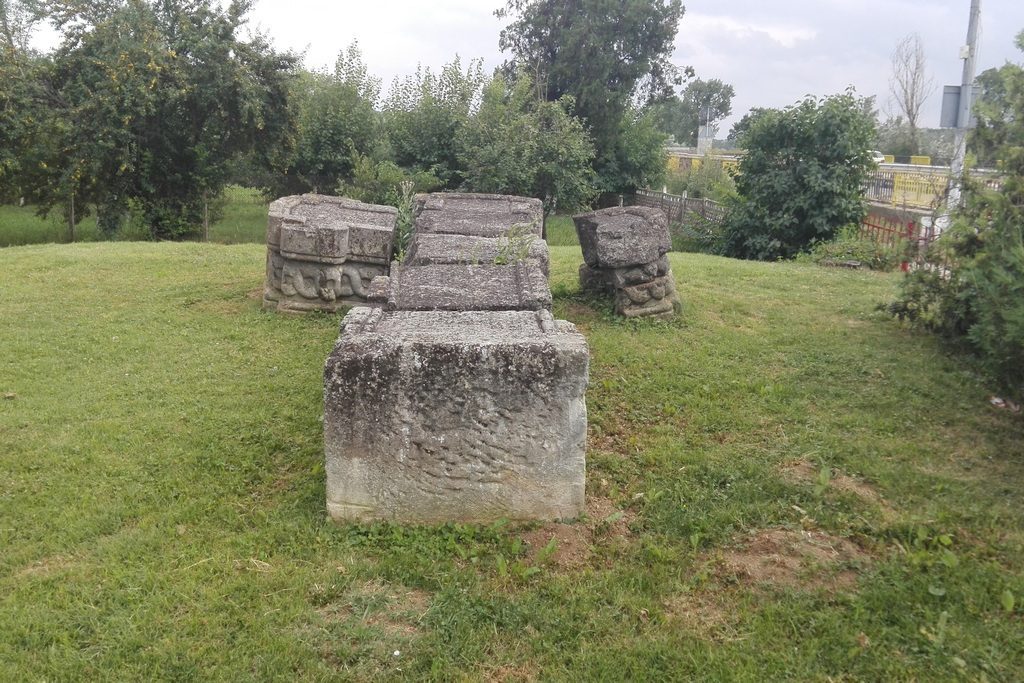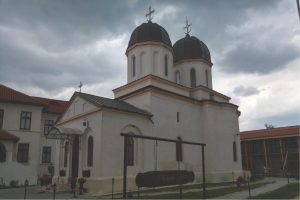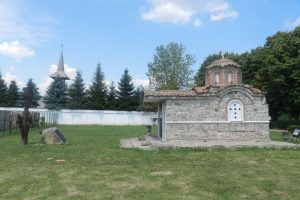

It was built in the year 1878 and it is located in the locality Călugăreni.
At the end of the XIXth century, the commune had the name of Uzunu, it was part of the hundred of Câlniștea of the county of Vlașca, and it was formed by the villages Călugăreni-Vartiade, Uzunu, Buturugari, Călugăreni-Moșteni and Călugărenii Mănăstirii (the Stone Cross), having three churches, two schools and three water mills (one on Neajlov and two on Câlniștea). At that time, on the current territory of the commune, there also functioned in the same hundred the communes Brăniștari and Strâmba Mare. The commune Brăniștari, was formed by the villages Brăniștarii de Jos, Brăniștarii de Sus, Brăniștari – Moșteni and Năneasca, having in total 865 inhabitants, two churches, a mill and a school with 37 students (among them, 11 were girls). The commune Strâmba Mare was composed by the villages Strâmba de Jos, Strâmba de Sus and Crângurile, having in total 1515 inhabitants; here there were three churches and three mills on Neajlov.
The Socec Annual from 1925 records the re-naming of the commune Uzunu into Călugăreni, it being part of the Călugăreni hundred from the same county; the commune had 2265 inhabitants in the villages Călugăreni, the Stone Cross and Uzunu. In the Călugăreni hundred there were also the communes Brăniștari (with 3828 inhabitants in the villages Brăniștari and Moșteni – Dobrotești) and Strâmba (with 4000 inhabitants in the villages Crânguri, Strâmba de Jos and Strâmba de Sus). In 1931, the villages Strâmba de Jos and Strâmba de Sus were united forming the village Strâmba.
In 1950, the villages were transferred to the district Vidra and, then, (after 1952) to the district Giurgiu from the region Bucharest. The commune and the village Strâmba received in 1964 the name of Hulubeștii. In 1968, the communes passed onto the county of Ilfov, the communes Brăniștari and Hulubești being dissolved, their villages passing onto the commune Călugăreni; at the same time, the village Moșteni – Dobrotești was dissolved and agglomerated with the village Brăniștari.[15] In 1981, a regional administrative reorganizing led to transferring the commune to the county of Giurgiu.
In the commune Călugăreni, there are three historical monuments of national interest: the monument of public forum “the bas-reliefs made of bronze from the bridge over Neajlov” (the middle of the XXth century), and the memorial or funeral monuments: “the cross of Michael the Brave” (1912 – 1913) situated at approximately 1 km. East on DN5 in the area of the village the Stone Cross; and the memorial ensemble Șerban Cantacuzino, also situated at the Stone Cross, on DN5, vis-à-vis from the church, and composed by the chapel (1845) and the cross of Șerban Cantacuzino (1682).




